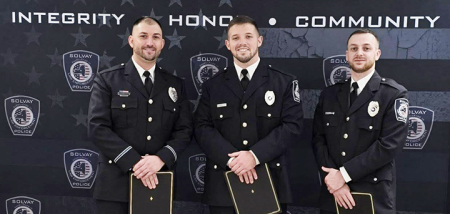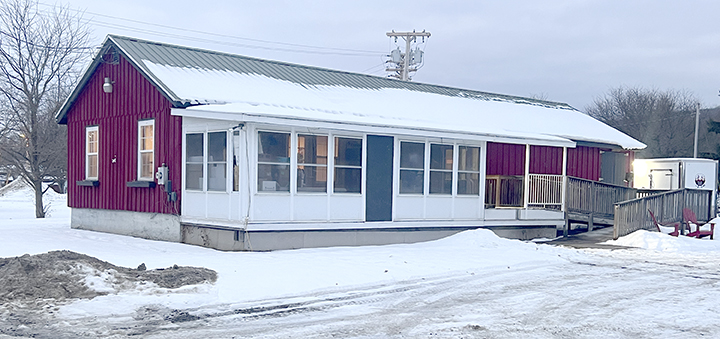Project Chenango:Chenango’s Tourism Industry
Published:
October 22nd, 2015
By Melissa Stagnaro
Special to The Evening Sun
stagnaro.melissa@gmail.com
CHENANGO – Motocross arrived in the rolling hills of Chenango County in 1969. That’s when Jill Robinson’s father Ward came home from seeing a race in New Hampshire determined to build a racetrack of his own. Forty-six years later, the internationally renowned track drawing competitors and spectators from all over the world.
“The genesis of the sport really started after World War II,” Robinson said, when servicemen started racing motorcycles left over from the war on European beaches. When Robinson’s father saw his first race, the fledgling sport was just beginning to gain popularity in the states.
He wasn’t a racer, she said, but he fell in love with the high-energy sport. Returning home, he saw an opportunity. And, as luck would have it, he also found the perfect property: a 175-acre dairy farm in the town of Columbus whose owners were ready to sell.
With its first race, Unadilla Valley Sports Center became one of the first tracks of its kind on the East Coast. It has grown in size and stature since those early days. Known in the racing world as Unadilla MX or simply Unadilla, it now encompasses 550 acres. Its schedule includes 5 to 7 races each year, including motocross, ATV racing and more. Those races range from amateur events to the big Pro-National weekend in August, which is one of twelve races that make up the American National series.
“You have to be a top-notch facility to have a national event,” Robinson said.
In the past year, the motorsports center has hosted 6 events, drawing a total of 6,200 competitors and upwards of 45,200 spectators. According to Robinson, those people come not only from across the US, Canada and the Caribbean, but as far away as South America, Europe and Australia. Only a small percentage are from Chenango and surrounding counties.
Robinson and her brother Greg have now taken over the business from their father. While traveling on business, she said they often see people wearing Unadilla shirts.
“Sometimes we forget just how popular it is out there,” she said.
That’s something she says often goes unnoticed here at home, despite the fact that they are one of Chenango’s largest tourist draws.
“They don’t know how big Unadilla is in the racing world,” Robinson said.
Despite their stature in the industry, Robinson said there is room for growth.
“We’re always looking ahead,” she said.
While they are careful about what events they add to their schedule, there is the potential to attract more spectators. What’s standing in their way?
“New York is not an easy place to do business,” Robinson said. “That certainly holds us back.”
The second issue is how expense it is for people to travel to the area. Air travel can be cost prohibitive, she said, and flying into any one of the region’s major airports still requires a drive.
And whether visitors are planning to fly or drive to an event, there’s the matter of accommodations.
“I wish there were more motels in Norwich,” Robinson said. “I’d fill them.”
With the limited number of hotel beds in the immediate area, spectators often have to go as far as Utica to find lodging. And what they find there is expensive, sometimes as much as $250 a night for a basic room because of demand.
According to Robinson, the travel expenses can be a deterrent for attendees. They may decide to come in just for the day, she said, or stay outside of the area where a higher quality hotel room can be had for a lower price. Or they may chose not to come at all.
Regardless, it’s money lost for the community, she said, because they are spending their tourist dollars elsewhere.
Robinson isn’t the only one feeling the lodging crunch. According to Chenango Blues Fest organizer Eric Larsen, accommodations are the number one thing holding the musical festival back from further growth.
“We do not have enough places for people to stay,” he said. “That’s the limiting factor.”
Blues Fest had its start in the early 90’s as a one-off fundraiser for the Chenango County Council of the Arts. Larsen volunteered at that initial event, which drew around 200 people. The following year, he and several others who were a part of the event decided to see if they could make another go of it.
“We had absolutely no knowledge whatsoever about music festivals,” he said. Despite that, they were able to increase attendance by half, to 300. It was enough to convince them that it was worth pursuing further.
Now, 23 years later, the event has evolved and expanded. The festival itself draws 3,000 people to the Chenango County Fair Grounds on the fourth weekend in August. The entire series – which kicks off with a Summer Series in downtown Norwich and culminates with a free show at the fair grounds on the Friday night before the main event – draws a total of 10,000.
At a recent festival, organizers conducted an informal survey to get an idea of the mix of attendees.
“The survey confirmed it’s about fifty-fifty,” Larsen said, with half of attendees being local and the other half out-of-county. Of the half that weren’t from Chenango, there was an almost even split between New Yorkers and out-of-state visitors.
Larsen said 57 of New York’s 62 counties were represented, and 17 states.
After a recent Blues Fest, he met a couple from Atlanta who have been coming for 10 years. The draw for them and the thousands of others who attend each year are the nationally and internationally recognized musicians they book.
These bands represent a diverse mix of ‘first rate’ talent, Larsen said. As many as 25 bands are booked for the various performances they host leading up to and including the main festival. The roster includes a lot more than just traditional blues.
“I’d love to see everyone come try it out,” he said.
According to Larsen, Chenango’s festivals and events are one of the things that helps put Norwich and the rest of the county ‘on the map’. And it provides more of a boost to the economy than most realize.
“Tourism is big business in Chenango County,” Larsen said.
Audrey Robinson, director of communications and marketing for Commerce Chenango, would be the first to agree.
According to Robinson, tourism pumped more than $28 million dollars into Chenango’s economy last year. That number includes tourist dollars spent on lodging, recreation, food and beverage, gas and even the purchase of vacation or seasonal homes.
“Close to 500 jobs are supported either directly or indirectly by tourism,” she said, accounting for more than $10 million in wages.
According to Robinson, Chenango had more than 175,000 visitors last year. Those visitors were drawn to attractions such as Bowman Lake, the Northeast Classic Car Museum, Wolf Mountain Nature Center, Black Bear Winery, the Earlville Opera House, Chenango River Theatre and, what Robinson calls one of Chenango’s best kept secrets, Rogers Environmental Education Center.
Many also came to enjoy Chenango’s festivals and events.
“That’s our biggest driver,” Robinson said.
The growing roster of events includes both the Chenango Blues Fest and the races at Unadilla, as well as Colorscape, the Norwich Pumpkin Festival, Gus Macker, the Sherburne Pageant of Bands, the General Clinton Canoe Regatta and more.
John Harmon, who heads the General Clinton Canoe Regatta committee, says the event draws approximately 1,000 paddlers and upwards of 10,000 visitors to Bainbridge every Memorial Day weekend. That doesn’t include the spectators up and down the river, who gather to watch the boats on the water, especially for Monday’s 70-mile professional race.
The regatta, now in its 52nd year, is part of canoeing’s prestigious Triple Crown.
“The whole idea was to promote Bainbridge and the area,” he said, explaining how the event got its start in 1963.
Harmon said that he’d love to have a college do an impact study to better quantify the boost it gives to the local and regional economy. Because it isn’t only Bainbridge that benefits. In fact, much of the impact is outside of Chenango as paddlers and spectators often choose lodging options in the Cooperstown or Oneonta area. This is in part because of the proximity to the start of the races, but also due to the limited options closer to Bainbridge.
Robinson and other local leaders are well aware of the negative impact Chenango’s limited lodging options have on the county’s ability to draw tourists. Last year, a lodging study revealed there were only 257 hotel beds in the county. That number includes two chain hotels, two independent hotels, a number of bed and breakfasts and three motels.
Unfortunately, the reputation of some of these facilities has prompted event organizers and businesses to look outside of the county to lodge their guests. According to Robinson, translates to between $750,000 and $800,000 in lost revenue for Chenango each year – not counting what those travelers then spend elsewhere in terms of food, gas, etc.
Owners of one of Chenango’s existing hotel properties have applied for a grant to allow them to reconstruct their facility in the hopes of making it more attractive to business travelers and tourists alike. But without additional development, there is no quick fix to Chenango’s long-term lodging needs.
For a music festival like Blues Fest, the ability to offer camping enables them to partially overcome the lack of area hotel beds. While the fair grounds has plenty of space to accommodate campers, there are a limited number of shower facilities and RV parking.
Larsen said the fair grounds is considering a project to upgrade these facilities. He’s excited by that prospect, not only because of how it could benefit Blues Fest, but also because he feels it could make the venue more attractive to other regional music festivals.
“If they could reconfigure, it would really draw more events,” he said. “That could help garner income to support their mission.”
Last year, when Larsen’s daughter was married, he came to realize lodging isn’t the only thing lacking in Chenango.
“There is not a venue that can accommodate 200 people,” he said.
Robinson agrees this is an issue. As part of the Central New York tourism region, she sees the opportunities out there to hold regional conferences and events that Chenango’s current infrastructure doesn’t support.
“It’s getting the right people to see the potential so we can move forward,” she said.
Robinson doesn’t let these challenges stop her from promoting what Chenango does have to offer.
“Right now we’re promoting the fall tours,” she said, along with hunting season. And with winter approaching, she’s also promoting Chenango County as a destination for snowmobilers and cross-country skiers.
“We have some fabulous trails here,” she said. “We want people to stop here, rather than drive through on there way to other destinations.”
Robinson’s budget to promote Chenango County totals $79,000, less than 3 percent of what tourism brings to the county in revenue.
Of that total, $42,000 is allocated by the Chenango County Board of Supervisors. Of that, $10,000 must be paid to the region. Without it, Chenango would lose out on the remaining $37,000 that rounds out her tourism budget – funds received from New York State’s Matching Funds program.
Using the state funds requires a local match, and there are other restrictions. One of which is that none of it can be spent on publications located within the county.
To help boost the budget for promoting Chenango, Robinson and Commerce Chenango have proposed instituting an occupancy or ‘bed’ tax.
“Travelers spending the night in our area would pay the tax,” Robinson explained. “It’s not a tax on local residents.”
Based on a 50 percent occupancy rate, a 4 percent tax could yield $160,000 in additional funds that could be used for tourism efforts.
Although the proposal had the support of Chenango’s business community, it was denied by the Board of Supervisors when it was last brought before them in 2012.
Robinson admits she has come under fire by those she says don’t fully understand what happens behind the scenes, or the administration required for the use of the state funds.
“Tourism doesn’t need a lot of infrastructure. We just have to promote it.” Larsen said. “I think Commerce Chenango is the organization that can do that the best.”
According to the festival organizer and local business owner, the same attractions, festivals and cultural events that draw tourists are what add to the quality of life for area residents.
“It shows how vibrant it really is here,” he said. “I don’t know how you put a price tag on that.”
Comments





